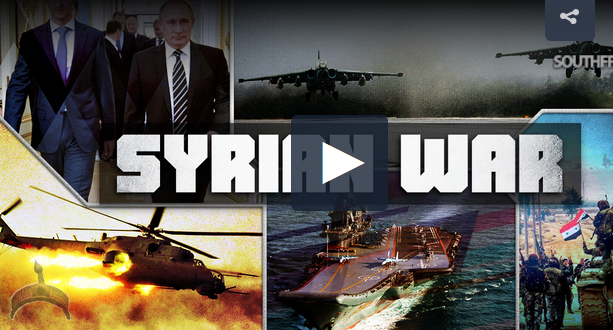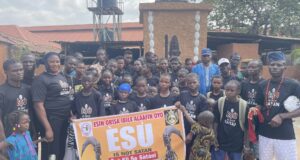RECONCILIATION, HUMANITARIAN AND SECURITY OPERATIONS
The cases of Aleppo, Eastern Ghouta, the Rastan pocket and other regions demonstrated that Russia’s leadership appeared to be aware of both the limits of the country’s power and of what can be accomplished using solely military means. Almost immediately after the start of the anti-terrorist campaign in Syria, Russian forces started participating in humanitarian operations across the country. The Centre for the Reconciliation of Opposing Sides, headquartered at the Khmeimim Air Base in the Syrian Arab Republic, is the main force carrying out humanitarian operations and promoting reconciliation efforts.
The Centre was established on February 23, 2016, four days ahead of the first Russian-US backed ceasefire [started on February 27, 2016], which was designed to cease hostilities and to separate moderate opposition from the many terrorist groups operating in the country. The ceasefire failed, because of the inability of the US-backed militant groups to separate themselves from Jabhat al-Nusra. Nonetheless, since then the Centre has become one of the key factors influencing the ongoing resolution of the conflict. There are 5 main organization units of the Center:
- a group engaged in analysis and planning;
- a group of negotiators;
- a group dedicated to cooperation with foreign organizations;
- a group for informational support;
- a group focused on providing humanitarian aid.
Servicemen of the Center played a key role in reaching withdrawal or reconciliation agreements with militant groups in such areas as Aleppo, Eastern Ghouta, Wadi Barada and Rastan. On almost a daily basis, the Center provides bulletins providing info on its activities and the military situation in the region. Thanks to the work of the Centre, over 2,500 settlements have joined the ceasefire regime by June 2018. The number of armed formations that have joined the ceasefire regime is 234.
Humanitarian corridors were also established at the contact line between the militant-held part of Idlib province and the government-held area. These corridors allow civilians to leave the area controlled by militant groups. Russian specialists also established mobile units which they use to provide medical aid to civilians. In general, about 300 people receive medical help on a daily basis.
Units of the Russian Military Police have been spotted in Aleppo, Deir Ezzor, Eastern Ghouta, Yarmouk, Rastan and other areas where reconciliation or withdrawal agreements have been reached with militants. The goal of these units is to monitor implementation of the agreements and to assist Syrian forces in restoring law and order in the liberated areas.
INTERNATIONAL REACTION AND PROPAGANDA
Since the very start, Russian military actions in Syria have faced strong criticism from the mainstream media and governments of the US-led bloc. Opponents of the Russian military operation have used and continue to use the following theses:
- The conflict in Syria will be a second Afghanistan for Russia;
- The key goal of the Russian military operation is to combat the moderate opposition, not ISIS or al-Qaeda (also known in Syria as Jabhat al-Nusra);
- Russia supports the bloody Assad regime, which has no legitimacy and is hated by the entire population;
- Russia participates in indiscriminate bombings of targets and uses unguided, conventional “dumb” bombs thus causing a high degree of civilian casualties;
- Russian forces suffer casualties on a constant basis but the Kremlin is hiding them;
- The Russian Defense Ministry is an unreliable source of information in comparison to the Pentagon or the US Department of State or even to such “independent” organizations as the Syrian Observatory of Human Rights, the White Helmets and Bellingcat.
These claims are especially interesting, because they exploit the audience’s lack of information about the conflict and mix facts with exaggerations or even outright lies. While the Russian side is also far from being innocent in promoting a one-sided version of the story, the US and its allies have a much larger and better funded media conglomerate by which to spread their propaganda. Mistakes of the Russian Defense Ministry in the coverage of its military operation in the country also played their own role.
Three examples of such high profile public speaking mistakes:
- On November 14, 2017 an official page of the Russian Defense Ministry released fake photos [old photos from Iraq and a screenshot from a video game] to illustrate a statement on interaction between the US-led international coalition and militants of ISIS. Later, the defense ministry said that a civil employee attached the wrong photos to the post and the incident was under investigation; however, no details on the result of this investigation were provided.
- In the third part of Oliver Stone’s Showtime special “The Putin Interviews” broadcasted from June 12 to June 15, 2017 Putin took out a cellphone to show Stone a clip of how Russian aircraft were striking militants in Syria. The video that appeared was US gun camera footage originally filmed in Afghanistan in 2013.
- On October 24, 2017, Defense Minister Sergei Shoigu stated that since the start of the operation in Syria, 503,223 km2 were liberated from terrorists. The problem here is that Syria’s total area is about 185,180 km2. Shoigu’s figure is 2.71 times larger than the entire country as it existed before the conflict.
One could describe these incidents as probable acts of informational sabotage. Putin does not use a personal cellphone, so some person had to have prepared the video beforehand. A Defense Ministry staffer provided Shoigu with the grossly incorrect figure, and someone released obviously fake photos via the defense ministry’s social media page. Were these very amateurish mistakes, or calculated sabotage? It is most probable that all of these cases are the result of the gross negligence or low quality of work of some middle to low level staffers involved in providing informational support concerning Russia’s military actions in Syria.
Only a small portion of the Russian Defense Ministry’s statements can be found on its website. Content demonstrated during press conferences – maps, photos and detailed information – is not translated into English and is not uploaded to the official ministry website after press conferences. The Russian mainstream media, such as Sputniknews and RT, do not attempt to cover all of the facts and details revealed during the press briefings. Thus, a major part of the audience, especially an English-speaking audience, remain uninformed about key facts and evidence provided. This situation is another factor allowing the Western mainstream media, pundits and experts to ignore the key arguments of the Syrian-Iranian-Russian alliance and to push their own narrative.
Two major examples of this:
On April 25, 2018 Chief of the Main Operational Directorate of the Russian General Staff Colonel General Sergei Rudskoy held a press briefing providing details on the results of the April 14 US-led missile strike on Syria. Colonel General Rudskoy demonstrated a presentation that included maps with locations and details of the missile interceptions and multiple photos of the intercepted missiles with comments explaining what they illustrated – all in Russian. Some vestiges of the intercepted missiles were also showcased during the press conference.
None of the content demonstrated by Colonel General Rudskoy was uploaded online following the press briefing. None of the content demonstrated was translated into English and covered in detail by RT, Sputniknews or any other Russian mainstream English-language media outlets. Even a detailed photo-report showing the vestiges of the intercepted missiles demonstrated during the press conference can hardly be found in English reporting of the event.
On April 26, 2018 Syrian and Russian officials held a press conference in The Hague. As previously stated, it was entitled “Presentation by the representative of the Ministry of Defense of the Russian Federation with direct participants of the fake video produced by ‘White Helmets’ on 7th April 2018, in the Hospital of Douma”. The press conference included a detailed overview of the results of the Russian-Syrian investigation of the April 7 incident in Douma with photos, videos, and statements from experts and eyewitnesses. None of the content demonstrated during the 2 hour press conference was uploaded online. No comprehensive coverage of the entire story, including facts and details, provided during the event appeared in the Russian mainstream media’s English language reporting.
As a result, the Western mainstream media was able to ignore these events and Western officials denounced them as propaganda stunts, while not addressing any of the facts or evidence provided by the Russian side, demonstrating the sad fact that if something does not exist for the English-speaking audience, it does not exist at all. Another failure of the Russian media is the unclear opinion expressed regarding the status of PMCs involved in the conflict. Private military companies and mercenaries are illegal in Russia, at least officially; however, such entities do exist and their members have been participating in the conflict for quite some time.
Here is an example how the MSM and U.S. officials exploit this official ambiguity:
On February 8, 2018 the US-led coalition released a statement saying that on February 7th it had struck “pro-regime forces” attacking “Syrian Democratic Forces headquarters” in the Euphrates Valley. According to local sources, the US strikes hit pro-government forces in the area between the village of Khasham (controlled by the government) and the CONICO gas facility (controlled by the SDF). Pro-government forces, supported by some PMCs, were allegedly trying to recapture the gas facility from the SDF.
The Pentagon stated that the strikes were defensive. The Russian side said that the US had attacked local militias carrying out operations against ISIS cells. However, the difference in these claims is not the most interesting part.
Almost immediately after the first reports of the US strikes, western MSM outlets started releasing reports based on anonymous sources that stated that between 100 and 300 “pro-Assad fighters” were killed by the strikes. A few days later, once again relying on anonymous sources, 100 to 300 allegedly killed “pro-Assad fighters” morphed into 100 to 300 killed “Russian fighters” – i.e. PMCs. Some “experts” and outlets even claimed that this number was much higher, in the realm of 600 killed.
The story developed further on April 12, when Michael Pompeo, then the CIA director recently nominated to be US State Secretary, claimed that the US had killed “a couple hundred Russians”. On April 20, US President Donald Trump provided his own statement based on the same story, claiming that there was a direct engagement between US and Russian troops in Syria and “many people died in that fight”.
This entire story demonstrates how a clear media forgery could reach the wide international audience and start being repeated as a fact. Since February 7, when the strikes took place, there has been zero evidence that can confirm any major casualties among Russian PMCs in this incident. 300 or 600 killed Russians in Syria is not something that can be hidden; however, no photos or videos of the bodies, names or any other evidence has ever been presented. The analysis of open data made by both pro-Syrian and pro-US analysts has concluded that 5 Russians may have reportedly died during the week when the US strikes took place. However, no details regarding the nature of their deaths are available. Sources in the SAA and other pro-government formations also deny any such casualties among Russian PMCs.
On February 14, the Russian Foreign Ministry confirmed that five “presumably Russian citizens” could have been killed in Syria and described reports about “mass” casualties among the Russians as fake news. The MSM has continued repeating the “300-600 killed Russians” story for almost half a year now. The narrative works because there is no official data on Russian PMCs in Syria. The MSM can effectively repeat a story which has no factual basis, while claiming that the Kremlin is hiding hundreds of casualties, because the Russian government continues to maintain a position of strategic ambiguity regarding the issue of Russian PMCs’ activities in Syria.
The Russians forgot to create their own army of NGOs and activist groups that would be able to oppose a media campaign run against them by the White Helmets, the Syrian Observatory for Human Rights (SOHR), Bellingcat and other organizations that claim impartiality, but are funded and promoted by the US and its allies. Only the many hard-won military victories on the ground allowed the Syrian-Iranian-Russian alliance to compensate for the many setbacks faced in the information war being waged by the US-led bloc and its massive media arsenal.
DIPLOMACY
During the time the operation in Syria was being conducted, Russia was acting amid growing sanctions pressure and tensions with the US. Despite this, Russia has appeared to be capable of changing the course of the war and imposing its own diplomatic formats to work towards and achieve a political solution to the conflict.
The table below provides a look at state and non-state actors involved in the conflict in terms of their relations with Russia:
Initially, the Russians made two early attempts to negotiate a semblance of an agreement with the US in order to establish a wide-ranging ceasefire across Syria and to separate the so-called moderate opposition from terrorist groups – Jabhat al-Nusra and its allies. The first deal was announced on February 22, 2016. It took effect on February 27, 2016. However, by July 2016, it had appeared that the US and its allies were not fulfilling their part of the agreement. The separation of moderate militant groups from terrorist groups had also failed. Furthermore, Jabhat al-Nusra and its allies used this time, with assistance from their foreign backers, to re-group and re-supply their forces in preparation for the battle of Aleppo.
The second attempt was made on September 10, 2016. The ceasefire brokered by the US and Russia started on September 12. Jabhat al-Nusra, ISIS and other terrorist groups were once again excluded from the cessation of hostilities. At the very same time, the battle of Aleppo entered its final stage. Jabhat al-Nusra-led forces were fiercely fighting the SAA in the city and were not going to obey any terms of the agreement, seeing this as a de-facto surrender. On October 3, the US announced its withdrawal from the deal accusing the Syrian-Russian-Iranian alliance of violating it.
Both of these cease-fire initiatives collapsed, because the sides had pursued very different and divergent goals. The US saw these ceasefires as a tool to interrupt a series of victories by the SAA across the country and to prevent the Assad government from liberating the city of Aleppo. It appears that the Russian side genuinely hoped to launch a bilateral cooperation with the US to de-escalate the conflict, to separate the opposition from the terrorists and to create conditions to deliver a devastating blow to Jabhat al-Nusra and ISIS.
Meanwhile, Turkey made attempts to normalize relations with Russia. After the Turkish Air Force shot down a Russian Su-24 jet in Syria on November 24, 2015, Moscow deployed additional forces to Syria, broke contact with the Turkish military and imposed painful economic sanctions on Ankara. By June 2016, President Recep Tayyip Erdogan and the rest of Turkish leadership had come to the conclusion that they had to restore economic and military cooperation with Russia. Ankara appeared to be drawing into Russia’s sphere of influence, at least as far as working on mutually beneficial end to the conflict.
In December, Turkey, Iran and Russia announced that they were launching a new format of negotiations on the Syrian conflict, which would be held in the Kazakh capital of Astana. The first round of the Astana talks took place on January 23 and 24, 2017 involving the Syrian government and a reasonably constructive element of the Syrian opposition. Turkey, Iran and Russia participated as the guarantor states.
During the fourth round of the Astana talks in May 2017, Moscow, Ankara and Teheran signed a memorandum on the establishment of de-escalation zones in Syria that included the militant-held parts of Aleppo, Idlib and Hama provinces, the Rastan pocket in northern Homs, the Eastern Ghouta region and the area near the Syrian-Jordanian border. ISIS, Hayat Tahrir al-Sham and its allies were excluded from the agreement. This time around the agreement worked, because the guarantor states did not pursue contradictory goals. The situation improved and conflict in a significant portion of the country was de-escalated, while operations against radical militant groups were able to continue.
Considering that the Geneva peace talks soon discredited themselves, proving useless as a format of effective change on the ground in Syria, the Astana talks became the main diplomatic format influencing the many parties involved to resolve or deescalate the conflict. Technically, the US and Israel were excluded from negotiations on the situation in central, western and northwestern Syria. There are two main formats of Russia’s contacts with the US and Israel:
- Contacts in order to avoid direct engagement between Russian and Israeli forces and between Russian and US forces;
- Contacts between Israel and Russia over the situation in southern Syria, close to the Israeli-occupied Golan Heights.
While Israel remains capable of carrying out airstrikes on separate targets in Syria, making loud diplomatic statements and threatening to employ any measures in order to combat Iranian forces in Syria, it has very few real options to influence the strategic situation in Syria at this point. From 2015 to 2018, the Israeli position in the conflict worsened significantly. The Assad government has remained in power and the Iranian presence in Syria, both politically and military, has increased.
On February 10, 2018, the Syrian military shot down an F-16I fighter jet of the Israeli Air Force which was engaged in targeting government positions or assets in Southern Syria. This is the first case of Israel losing a combat aircraft to an enemy combatant since 1982. Despite the increased number of Israeli strikes over the past two years, their effectiveness has decreased and the Syrian air defense forces have begun to respond more actively.
The current situation in southern Syria also shows how Russia limits Israeli actions through diplomatic channels. Tel Aviv has repeatedly stated that any SAA advance in the area is unacceptable, because it would lead to further deployment of Iranian forces there. However, the SAA operation there has been launched without any response, possibly because Russia has helped to limit or prohibit Iranian involvement. Throughout the conflict, the attitude exhibited by Russian diplomacy has been close to that of the Iranian leadership. While Russia and Iran had joint military goals in many respects, there were notable differences in their diplomatic attitudes, most notably their respective attitudes towards Israel. These differences of opinion may lead to changes in the status of their cooperation in resolving the conflict once the overt military phase has ended.
CONCLUSION
 Ọmọ Oòduà Naija Gist | News From Nigeria | Entertainment gist Nigeria|Networking|News.. Visit for Nigeria breaking news , Nigerian Movies , Naija music , Jobs In Nigeria , Naija News , Nollywood, Gist and more
Ọmọ Oòduà Naija Gist | News From Nigeria | Entertainment gist Nigeria|Networking|News.. Visit for Nigeria breaking news , Nigerian Movies , Naija music , Jobs In Nigeria , Naija News , Nollywood, Gist and more









